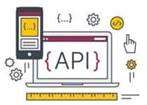While it doesn’t offer the same high-speed access as block storage, it has benefits for infrequently accessed data, such as archival storage or backup data. The correct storage choice will reduce costs and contribute to your overall cloud cost optimization strategy. Part of your cloud cost optimization strategy should include pinpointing underused (and inefficiently used) cloud resources.

The beauty of Cloud Logging is that all logs are accessible throughout their lifespan. Cloud Logging is designed to scale easily and efficiently, which makes logs accessible for troubleshooting, investigating and compliance reasons whether they are seconds or years old. Many of the issues I’ve described above come from lack of awareness from the development team. In these cases, one of the DevOps engineers should explain to developers and stakeholders how their daily decisions affect the company’s cloud bills. If you’re unsure about the optimal choice, you can always select the S3 Intelligent Tiering. This storage class accounts for your usage patterns to pick an optimal storage tier.
Create cross-functional teams
It’s no surprise that cloud spending is rapidly increasing, so it’s also no surprise that controlling those rapidly increasing cloud costs is a top priority for business, technology, and data leaders. Third-party cost management tools can address the functional limitations of first party tools, and commonly provide multi-cloud cost management. Most of these tools are built to reduce cloud costs across a variety of cloud services and workloads, providing clear return on investment (ROI).
- Administrators and developers sometimes provision a temporary server for a certain task and might forget to de-provision it after the job finishes.
- Sharing these findings with your cloud administrator can allow you to reduce idle and unallocated costs, or better yet, you might even be able to deal with them yourself.
- If one service goes down or consumes too many resources, the rest of the product works just fine.
- Thus, they pivoted to their unique group-buying go-to-market (GTM) strategy.
For example, the provider can offer negotiated and programmatic discounts for higher upfront payment or commitment to use their service for an extended time. Then, adjust your cloud architecture to reduce the number of necessary data transfers. For example, you could move on-premises applications that frequently access cloud-hosted data into the cloud to eliminate those hops. Implementing real-time monitoring and analytics provides valuable insights into your cloud usage.
Cloud Cost Optimization Best Practices
Automating AWS Cost OptimizationUsing AWS cost-effectively can be a challenge. In this free, on-demand webinar, you’ll get an overview of AWS cost-optimization tools and strategies, like data storage optimization. It’s likely you’ll use a combination of these, as each one has its own advantages and disadvantages. It’s admittedly not a riveting topic, but they’re worth your time — and money, literally — to learn about. Monitoring and controlling cloud spend can be overwhelming, considering hundreds of metrics.
CloudBolt has two different offerings (a cloud management platform and a costing optimization tool, which supports the big three and VMware). You might be in the market to switch to a new provider in order to add features or because you aren’t happy with your provider’s downtime or level of customer support. This is not surprising because, in 2024, 80% of companies will be unaware of their mistakes in their cloud adoption and will overspend by 20 to 50%. If you haven’t optimized your cloud, you’re probably not spending your money in the right ways. It is possible to be charged for ingesting the same log entry into Cloud Logging log buckets multiple times. For example, if your sinks route a log entry to two log buckets, you will pay ingestion costs at two buckets.
What are some cloud cost management tools?
From our experience at MindK, most SaaS companies waste about a third of their cloud spending, so learning how to reduce cloud costs is essential. Today, we’ll share some of the most efficient cloud cost optimization hacks from MindK’s DevOps engineers. Effective cloud cost management begins with cloud cost management implementing robust monitoring and analytics. This involves tracking and analyzing your cloud usage to identify areas where costs can be reduced. These tools provide detailed insights into your cloud usage, helping you identify patterns and trends that could indicate unnecessary spending.
Fortunately, there are tools and cost optimization practices that can help eliminate unnecessary spending. Cost optimization also helps organizations strike a balance between cloud performance and spend. Object storage, on the other hand, is significantly more cost-effective for storing large amounts of unstructured data.

AWS supports both manual and automatic EBS snapshots – copies of your data at the point in time. You can store these snapshots in S3 buckets for disaster recovery or when migrating the data to other regions. One of the key drivers of escalating cloud costs is the underutilization of resources. These resources, if not utilized effectively, can lead to unnecessary costs.

Similarly, understanding Google Cloud’s cost visibility, resource usage optimization, and pricing efficiency features will give you the tools you need to optimize costs across all your technologies and teams. Once you have a firm grasp on how to approach cost optimization in the cloud, it’s time to think about the various tools at your disposal. At a high level, cost management on Google Cloud relies on three broad kinds of tools. As organizations adopt a multi-cloud strategy, they are finding it hard to manage the cost and value of their cloud spending.
